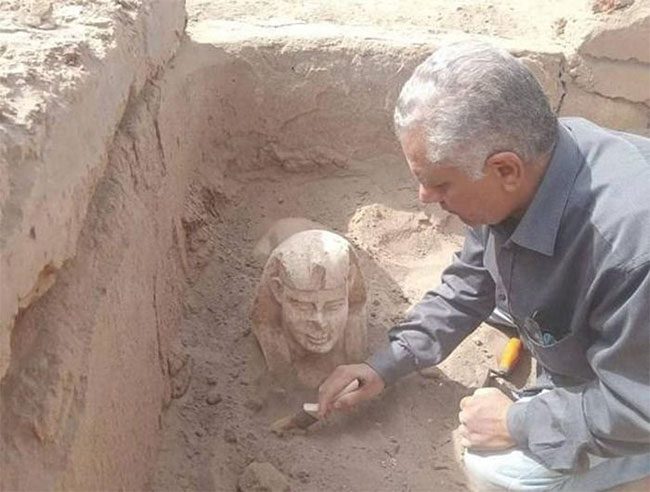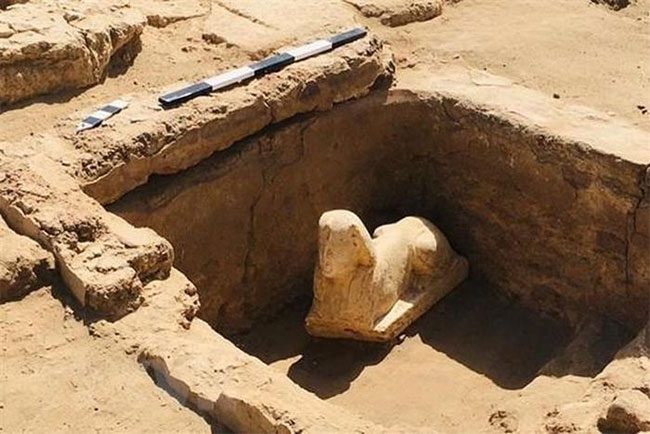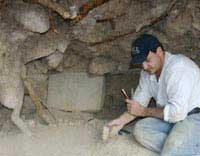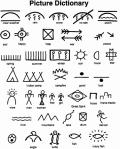According to a reporter in Cairo, the Secretary-General of Egypt’s Supreme Council of Antiquities, Mostafa Waziry, announced on March 6 that an archaeological delegation from the country has discovered a Sphinx statue dating back to the Roman period in Qena province, located in Upper Egypt.

The recently discovered Sphinx statue. (Source: newsobserver.com).
This limestone sculpture was created for the Roman Emperor Tiberius Claudius (41-54 AD) and was excavated near the Temple of Dendera in Qena.
The Egyptian archaeological team, led by former Minister of Antiquities and professor of archaeology at Ain Shams University, Mamdouh el-Damaty, found the statue at the excavation site of a temple dedicated to the god Horus, which was built east of the Temple of Dendera during the Roman period.

The Sphinx statue excavated near the Dendera temple in Qena, Egypt. (Photo: AFP/TTXVN).
In addition to this statue, archaeologists also discovered a stele inscribed with ancient Egyptian hieroglyphs and Demotic characters (a script used in Egypt during the first millennium BC) at the bottom of the stele.
The team also excavated the remains of a maqsura (a restricted area) made of limestone, which includes a water basin constructed of red bricks covered with plaster. This structure is believed to date back to the Byzantine period.
The archaeological team began excavation work at the site mentioned above in February, utilizing radar technology to search for empty spaces and corridors in the Osirian style at the Temple of Dendera, as well as conducting magnetic and radio surveys in the area east of the temple’s surrounding wall in front of the Isis gate.
The surveys were conducted in collaboration with a group of experts from the National Institute for Astronomy and Geophysics.





















































